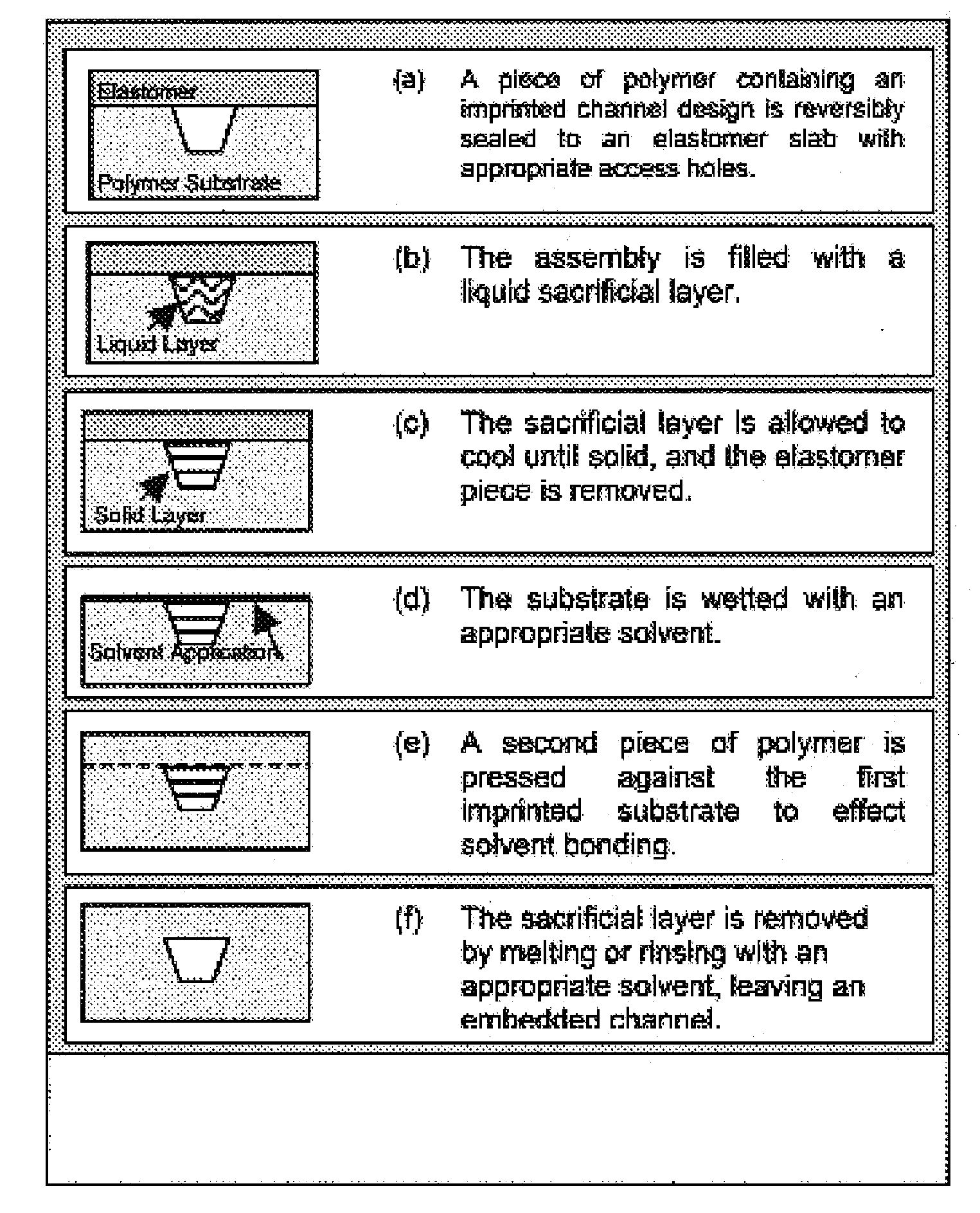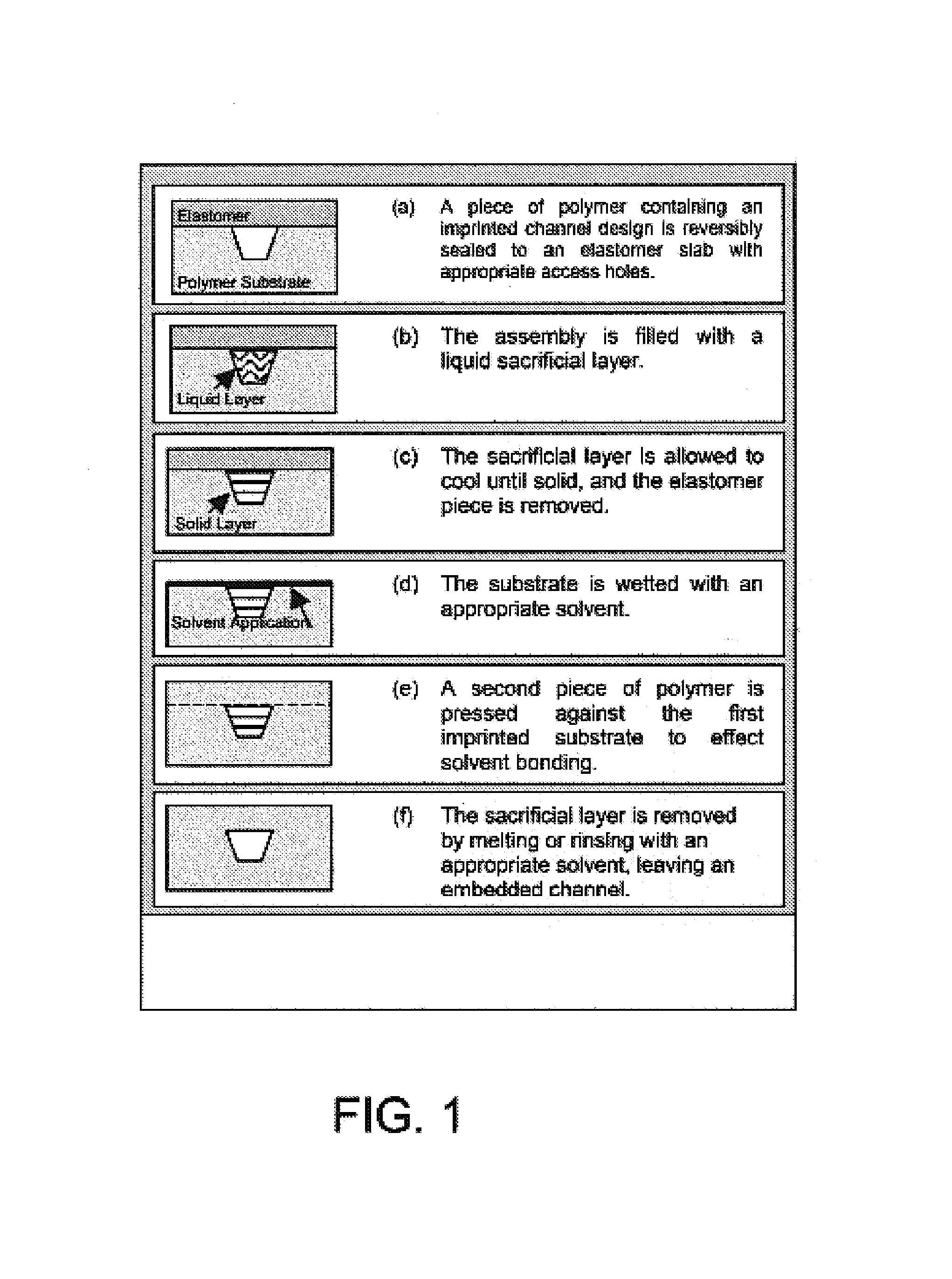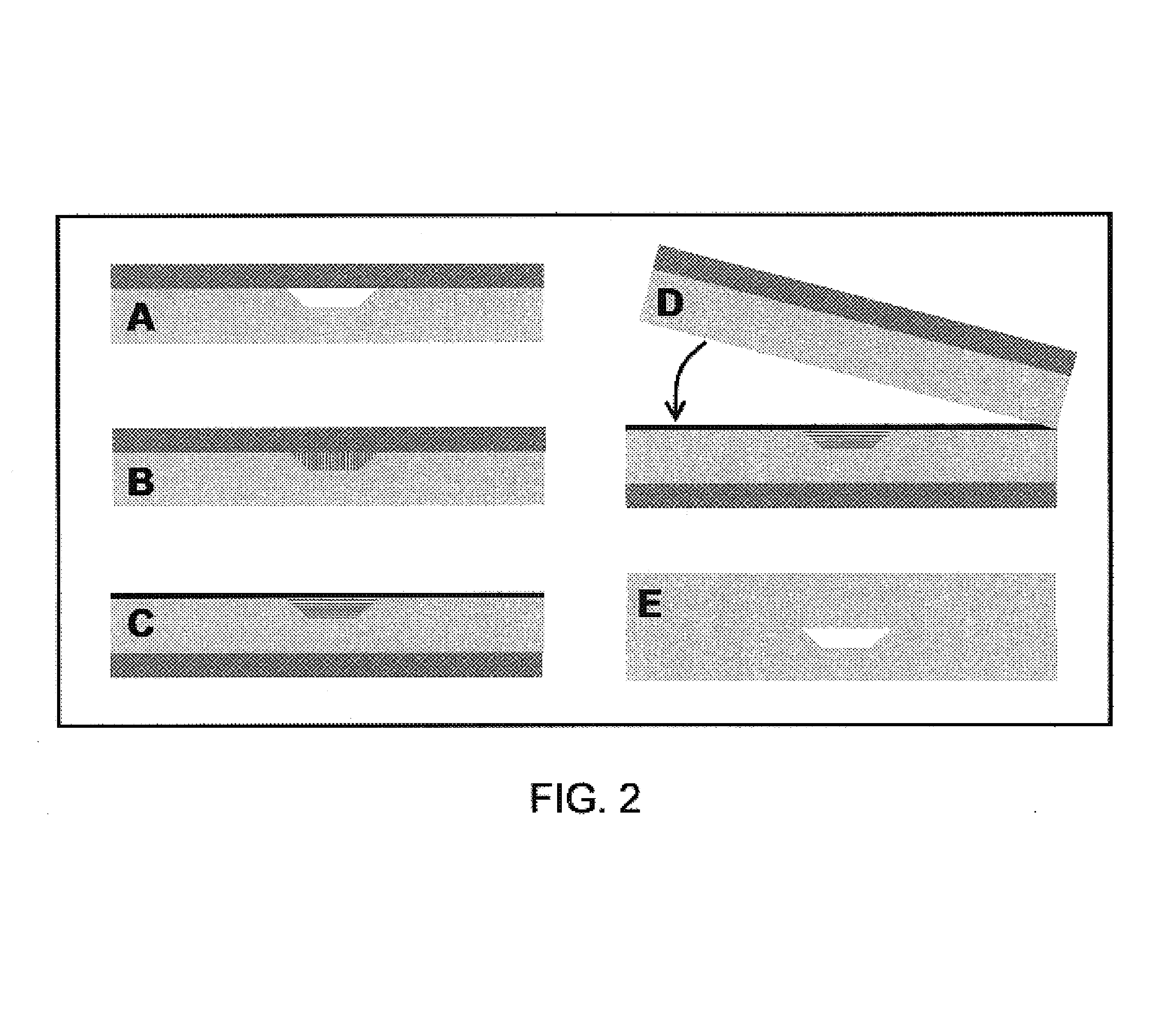Phase-changing sacrificial materials for manufacture of high-performance polymeric capillary microchips
a polymeric capillary microchip and phase-changing sacrificial material technology, applied in the direction of diaphragms, cells, positive displacement liquid engines, etc., can solve the problems of weak adhesion, complex and time-consuming fabrication process, and high cost of thermal bonding, so as to enhance the microchip analysis of biomolecules and improve protein focusing performan
- Summary
- Abstract
- Description
- Claims
- Application Information
AI Technical Summary
Benefits of technology
Problems solved by technology
Method used
Image
Examples
example i
Conclusion and Summary of Example I
[0074]It has been shown that polymeric microchips can be created by using a sacrificial material to protect channel integrity during solvent bonding. This phase-changing sacrificial material fabrication method is simple to implement, and tests show that solvent-bonded devices can withstand >10-fold higher internal pressures than thermally bonded substrates. CE separations of FITC-labeled amino acids and peptides were successfully carried out on solvent-bonded devices in as little as 8 and 15 s, respectively, with theoretical plate numbers exceeding 40,000 for both analyses. Finally, devices can be operated at electric fields>1500 V / cm and can be used for hundreds of electrophoretic separations without any change in performance. Solvent bonding with phase-changing sacrificial materials should help to overcome some of the previous limitations of polymer microfluidic devices and make them more attractive for chemical analyses.
Example II
Imprinting
[0075...
example ii
Conclusions and Summary of Example II
[0104]Solvent bonding of PC and PETg has been demonstrated as a realistic option for fabrication of CE microchips. Thermal imprinting techniques for these two polymers were developed, and solvent embossing was explored as an alternative. Different bonding solvents and phase-changing sacrificial materials were also evaluated, and the best results were obtained with acetonitrile as the solvent and Crème wax as the sacrificial material. Finally, simple CE separations were performed on completed devices to assess their potential for microchip chemical analysis applications. The fabrication techniques developed and implemented here have the potential to both simplify and improve microdevice construction.
Example III
Sample Preparation and Materials
[0105]All buffer solutions were made using purified water from a Barnstead EasyPure UV / UF system (Dubuque, Iowa) and passed through a 0.2-μm filter (Pall, East Hills, N.Y.) prior to use. Peptide standards (Sig...
example iii
Conclusions and Summary of Example III
[0122]A simple method for the in situ polymerization of semi-permeable membranes in microfluidic devices is shown in this example. Channels are first filled with a liquid, which becomes a protecting sacrificial material upon solidification. A monomer solution is then poured over the filled microchannels and UV polymerized to form an ion-permeable hydrogel. Finally, the PCSM is melted and removed, leaving a microfluidic network interfaced with a polymer membrane.
[0123]Application of this fabrication approach in making μ-EFGF devices and membrane-based protein preconcentration microchips was shown. Because the μ-EFGF channel cross-sectional dimensions were smaller than those of previous membrane-based EFGF setups, Taylor dispersion was reduced, resulting in narrower focused bands. EFGF of natively fluorescent proteins was demonstrated with improved resolution compared to earlier work. Moreover, fluorescently labeled peptides were focused with >150...
PUM
| Property | Measurement | Unit |
|---|---|---|
| temperature | aaaaa | aaaaa |
| diameters | aaaaa | aaaaa |
| temperatures | aaaaa | aaaaa |
Abstract
Description
Claims
Application Information
 Login to View More
Login to View More - R&D
- Intellectual Property
- Life Sciences
- Materials
- Tech Scout
- Unparalleled Data Quality
- Higher Quality Content
- 60% Fewer Hallucinations
Browse by: Latest US Patents, China's latest patents, Technical Efficacy Thesaurus, Application Domain, Technology Topic, Popular Technical Reports.
© 2025 PatSnap. All rights reserved.Legal|Privacy policy|Modern Slavery Act Transparency Statement|Sitemap|About US| Contact US: help@patsnap.com



